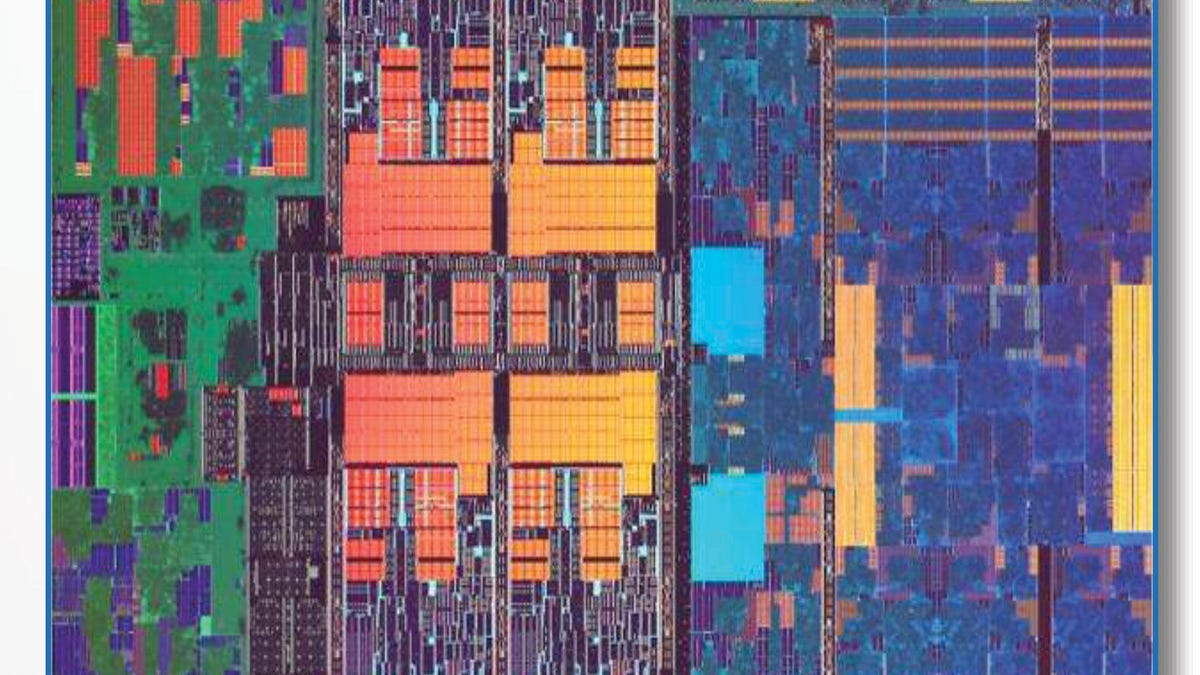Intel 5G M.2 module, faster light-laptop CPUs arrive
Intel hopes to speed the adoption of 5G connectivity in notebooks.

Intel's 11th-gen (Tiger Lake) chip, which launched in the second half of 2020.
On the eve of Computex, the normally mammoth trade show in Taiwan that's gone virtual for 2021 due to the pandemic, Intel quietly rolled out a pair of faster processors for thin-and-light laptops and the 5G M.2 module for laptops, the Intel 5G Solution 5000. (Computex was canceled in 2020.)
The 5G module, which went into testing in August, is intended to offer a quick and easy way for laptop manufacturers to incorporate the latest cell technology standard into their products.
Periodically, Intel tiptoes through the production lines, gently plucks the choicest, fastest chips from among its neighbors and tenderly squeezes them to eke out a few hundred more megahertz of speed.
Thus does Intel deliver unto us a new CPU during a technology lull; in this case, the Core i7-1195G7 and i5-1155G7, new thin-and-light laptop CPUs sprung from September's i7-1185G7 and i5-1135G7, respectively. Expect to see them in the next round of laptop refreshes later this year.
The i7-1195G7 gets an extra bump by jumping from Turbo Boost 2.0 to Turbo Boost Max 3.0, which further juices up the fastest core in the chip to gain slightly higher frequencies out of it. That's how it achieves the magic 5GHz single-core frequency burst in a low-power (12-28 watts) chip.
CPU updates compared
| CPU | i5-1135G7 | i5-1155G7 | i7-1185G7 | i7-1195G7 |
|---|---|---|---|---|
| Base frequency (GHz) | 2.4 | 2.5 | 3 | 2.9 |
| Max single core turbo (GHz) | 4.2 | 4.5 | 4.8 | 5.0 |
| Max all core turbo (GHz) | 3.8 | 4.3 | 4.3 | 4.6 |
| Graphics maximum frequency (MHz) | 1.3 | 1.35 | 1.35 | 1.4 |
Clock frequencies aside, the i5 and i7 chips in this line of mobile CPUs retain an advantage over AMD's competing chips for graphics: Intel upgraded the integrated GPU for them with its newer, faster Iris Xe graphics, but AMD's still include its comparatively slow Vega-generation. Rumors say AMD's working on incorporating its latest RDNA 2.0 architecture into future CPUs, but they're not here yet.
The Intel 5G Solution 5000 M.2, which just attained worldwide certification, was developed in partnership with MediaTek, which provided the modem, and Fibocom, which built the module and handled the global certification processes. The module supports 5G NR (the de facto standard in 5G modems) in mid-band, sub-6GHz frequencies. Acer , Asus and HP are expected to ship the first laptops incorporating it this year.

